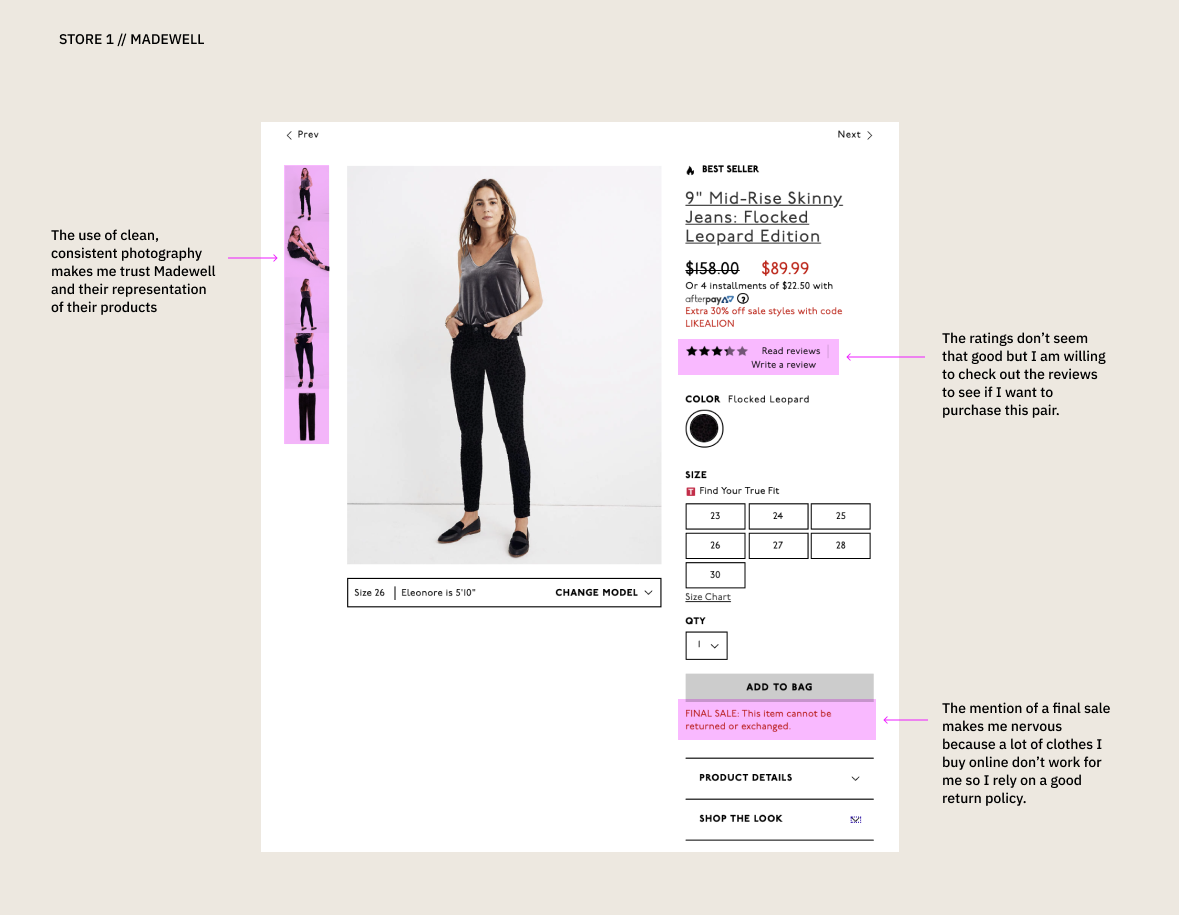By: Eunice Choe
Over the course of a few days, I browsed through three websites (Madewell, Everlane, and Urban Outfitters) to find the perfect pair of jeans. In the process, I took note of ways the online stores use persuasive messages to convince me to click on their products and potentially purchase them. I specifically looked into each website’s section for denim jeans and evaluated the elements that informed my decisions while browsing.
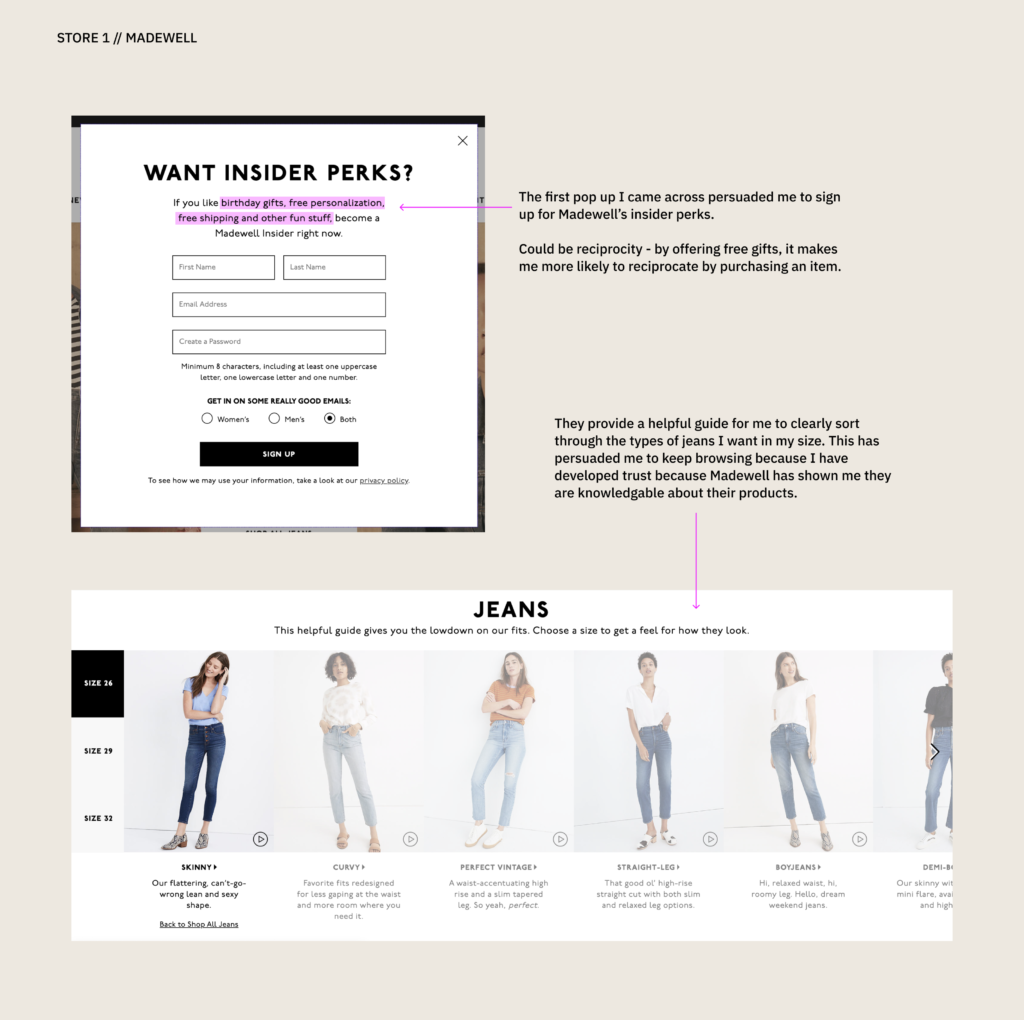
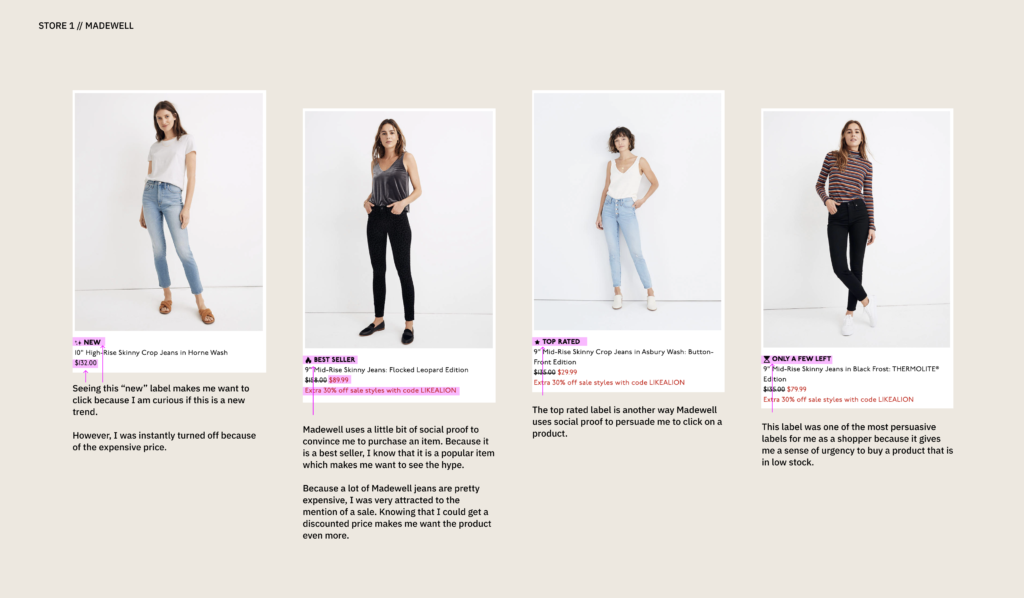
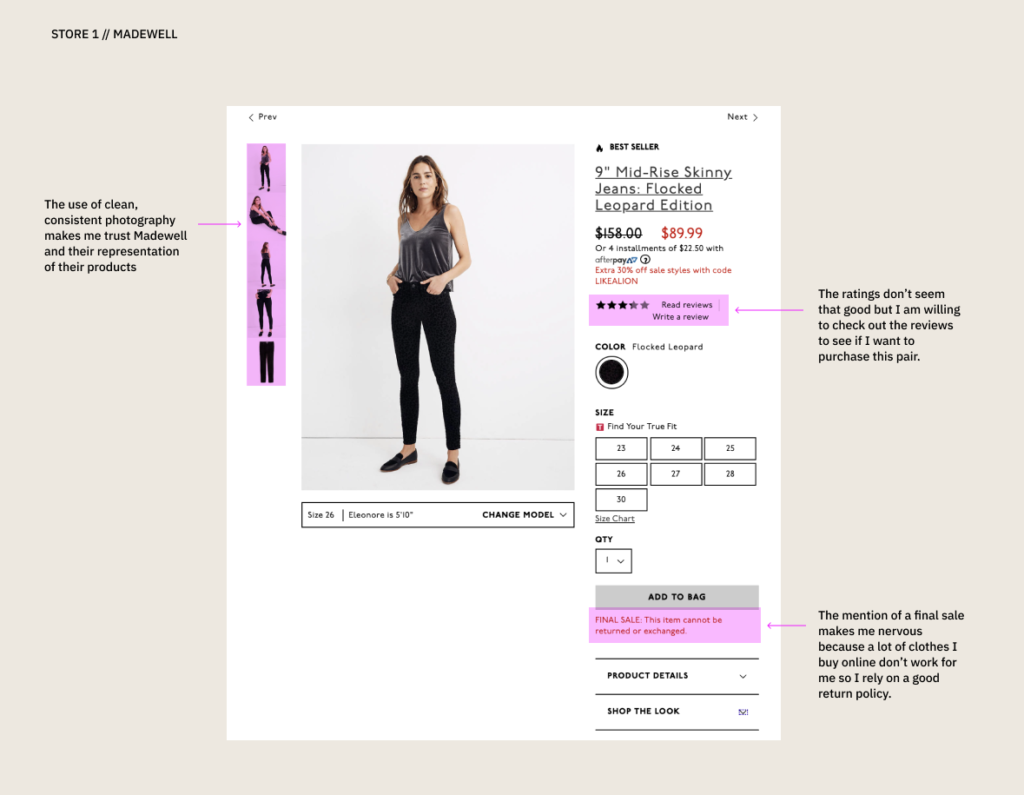
Store 1: Madewell
When I first went on Madewell.com, I was given a pop up that offered free gifts and shipping if I signed up for an account. I typically exit out of these pop ups but this time I decided to sign up because I was interested in free shipping. Through this pop up, Madewell could have been using a subtle form of reciprocity to persuade me to sign up. Because they unexpectedly offered free shipping, I found that I was more likely to reciprocate by signing up. Upon entering the denim jeans section, I found that the website had resources to guide me through the different options I could browse through. By providing a guide, I felt myself building up a sense of trust. Another aspect of the product listings that persuaded me to click were bolded labels that pointed out jeans that were new, top rated, best sellers, or low stock. Along with the image and description of the product, I found that these labels were the driving factor that encouraged me to click on an item. In particular, the “only a few left” label was the most persuasive.
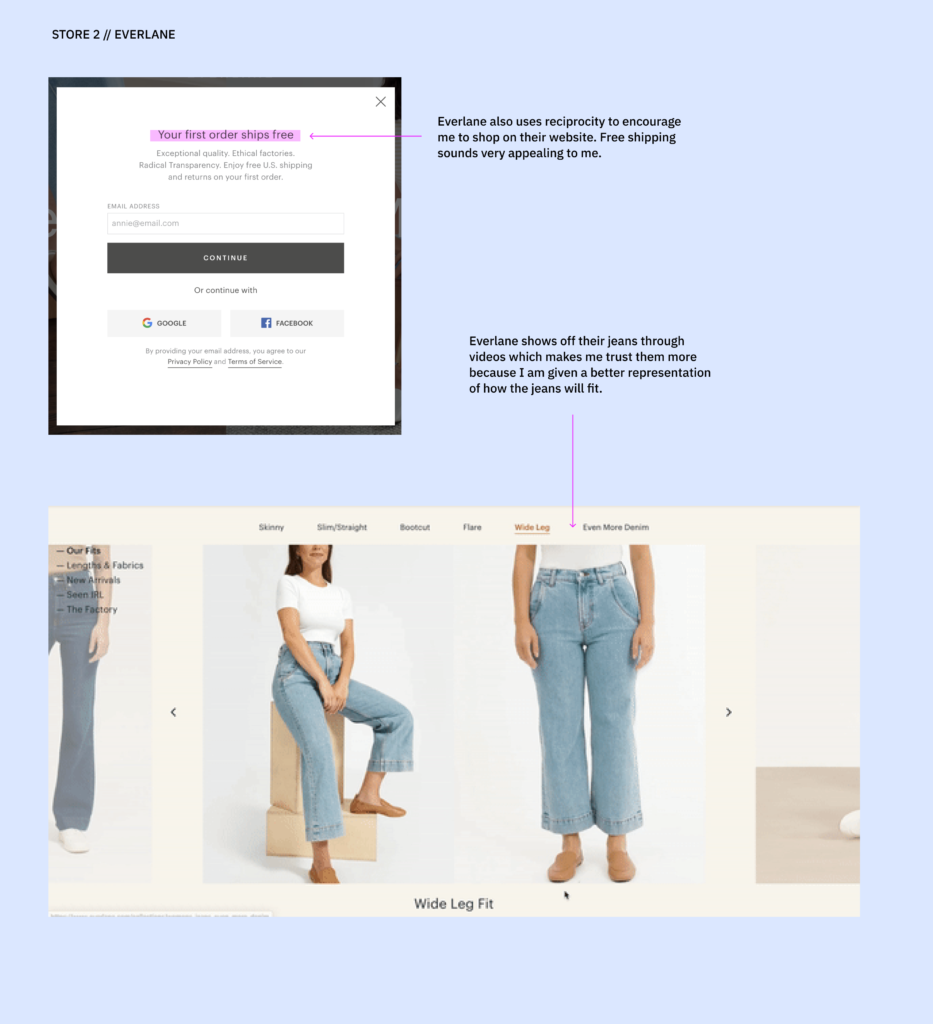
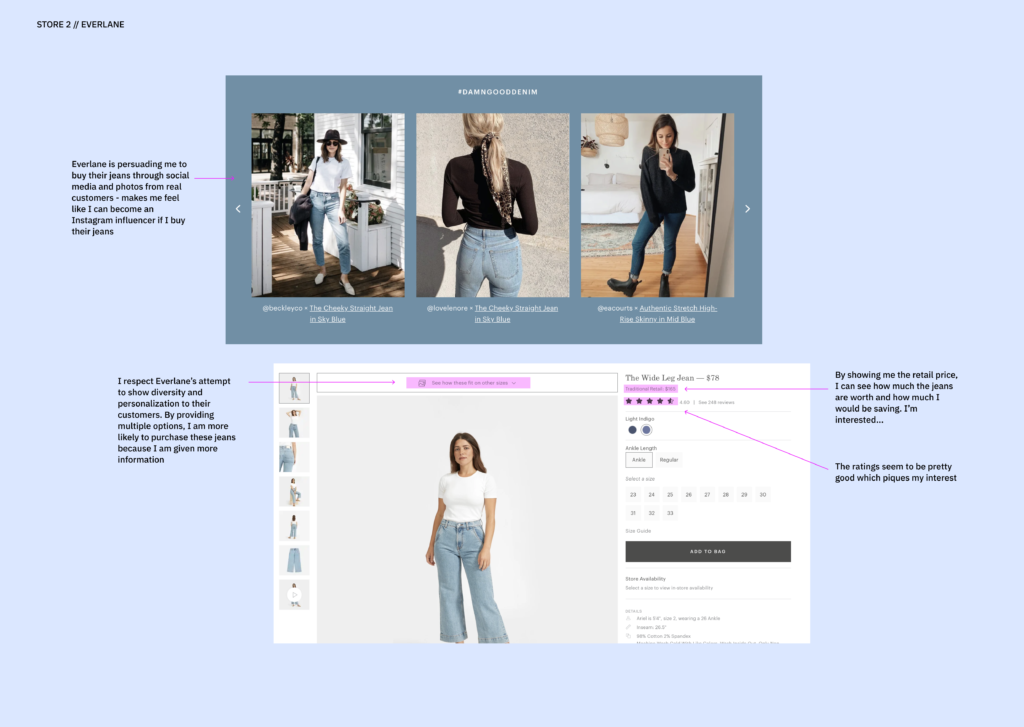
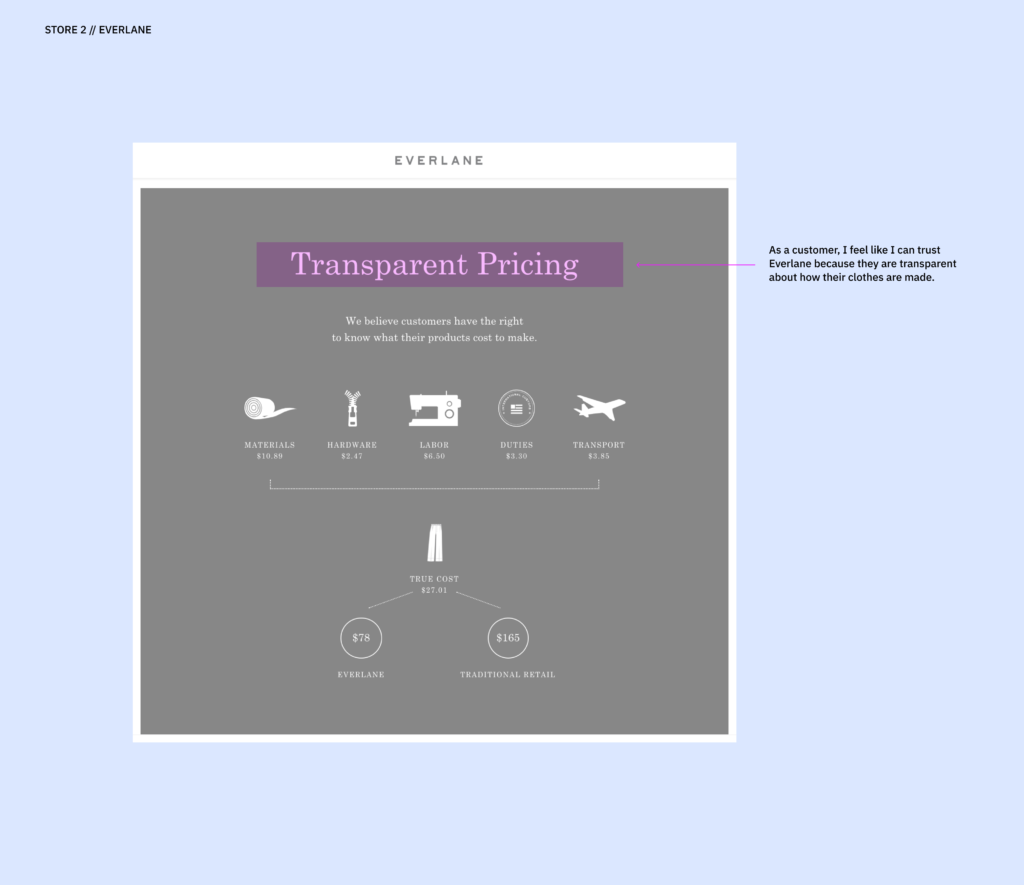
Store 2: Everlane
When I went onto Everlane’s website, I noticed that they used the same strategy as Madewell to persuade me to sign up for an account. One difference with Everlane is that they seem to be more open about their mission statement. Throughout my interactions on the website, I noticed that they emphasize high quality, ethical production, and transparency. By being transparent about how they produce and price their products, I found myself trusting them more and evaluating how my moral values align with theirs. The strongest persuasive strategy Everlane used was consistency because I am someone who wants to make more ethical decisions when purchasing clothes, and I found myself wanting to align with their mission.
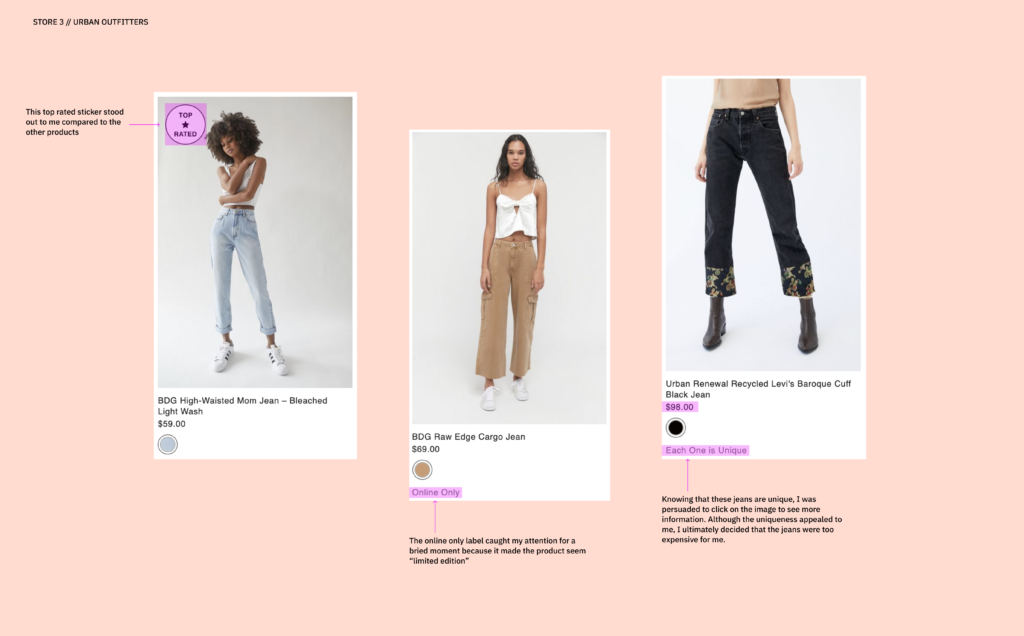
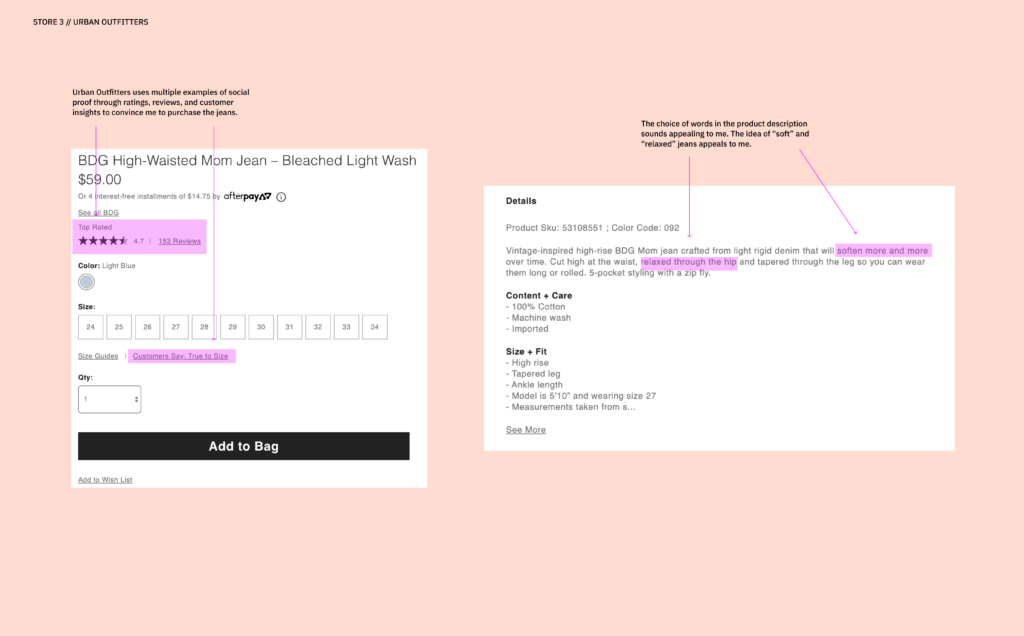
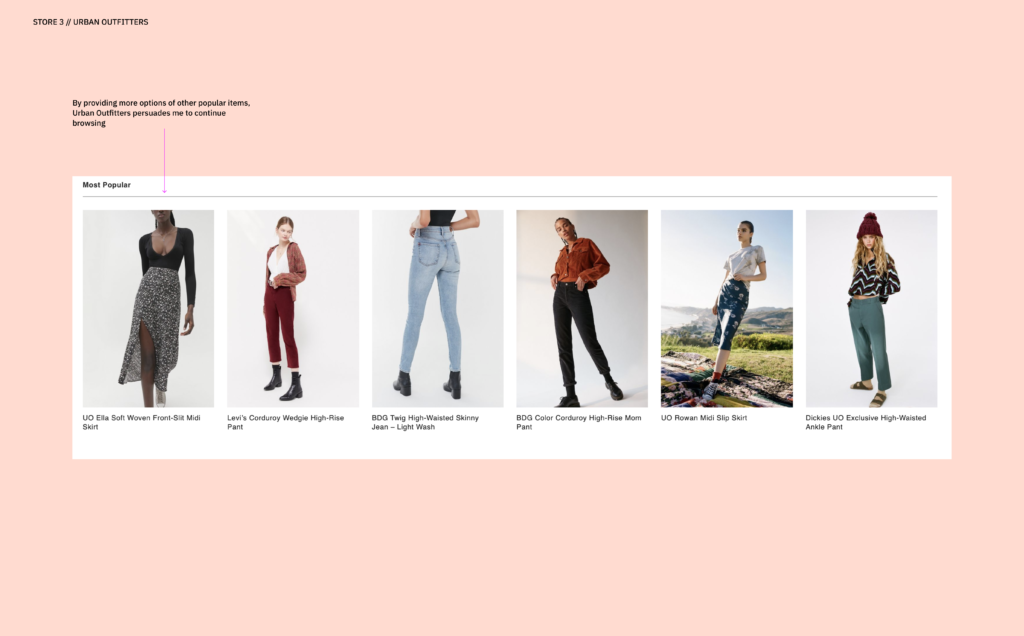
Store 3: Urban Outfitters
On Urban Outfitters, I found that it was difficult to navigate the website to find their women’s jeans section, which made my shopping experience off to a bad start. When I found the section, I scrolled through the products and noticed there was a lack of personalization, which made me not want to purchase their items. However, when I clicked on jeans I was interested in, I noticed that Urban Outfitter’s strongest persuasive strategy was social proof. There were many elements of the product listing that influenced me because they were based on other customers’ opinions. The website does a good job of emphasizing the ratings, reviews, and what the customers have to say about the sizing.
Final Thoughts
Through this experience, I was able to see how online stores use persuasive strategies to promote their products and encourage users to purchase them. There were many commonalities across the websites, such as the use of social proof and reciprocity to persuade me to purchase jeans. However, I found that the most effective strategy was Everlane’s use of consistency. Because of their mission driven outlook, I was persuaded to purchase their jeans because I wanted my ethical beliefs to align with my purchasing habits. In addition, Everlane was effective in earning my trust through their transparency.
The winner is Everlane!
